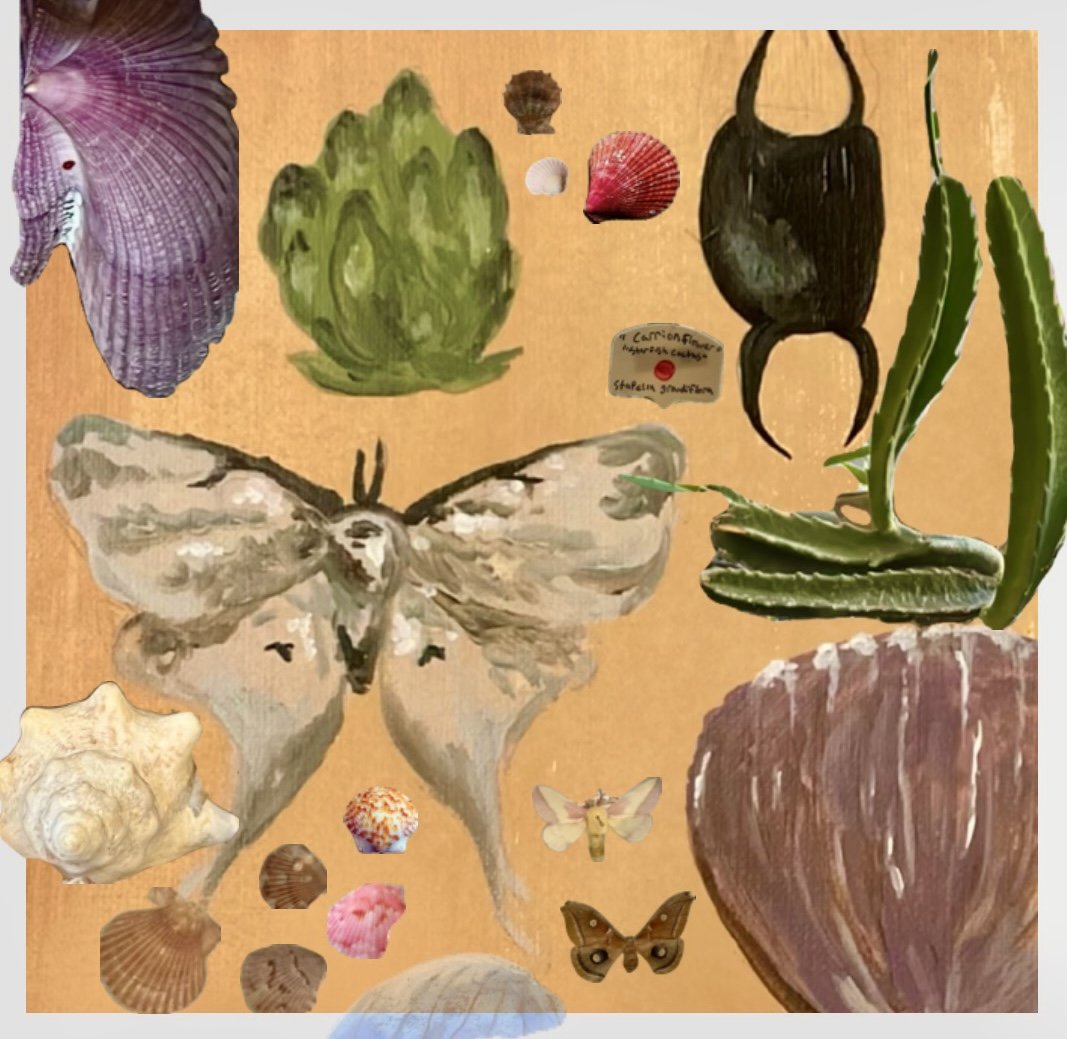RISD’s nature lab
By Ruby Nemeroff R’27
Illustration by Ana Vissicchio B’26
The campus of the Rhode Island School of Design is scattered across College Hill, running along the Providence River and winding up towards the outskirts of Brown University. Composed of a variety of buildings curated to the individual needs of RISD’s majors, each studio must reflect the unique creativity and innovation of its students—though it wasn’t always that way.
In October, 1877, Helen Adelia Rowe Metcalf, along with a group of other women, established the Rhode Island School of Design, one of the first independent schools of art and design in the U.S. Opening with a mere 43 students, RISD operated solely out of the 6th floor of the Hoppin Homestead Building (283 Westminster Street) before eventually commissioning the construction of a new edifice on 11 Waterman Street—now known as the “Waterman Building,” home of the Nature Lab.
Originally housing the RISD library, the rooms of the Nature Lab were swiftly claimed by 1920 RISD alum and professor, Edna Lawrence (following the relocation of the library to 15 Westminster Street in 1937) to store her extensive collection of bones, insects, seeds, and other organic materials for the observational use of her students. An avid traveler, Lawrence would gather items from across the globe to bulk up the supply of the Nature Lab, now standing at over 80,000 items total. She would often integrate the objects in the Lab into her students’ assignments, having taught a range of drawing, sketching, painting, and perspective-based classes, in addition to championing several RISD clubs. As time went on, Lawrence amassed a multitude of artistic leadership awards, including the Art Club Medal in 1975 and Alumni of the Year Award in 1968. Today, the Lab is named in her honor and frequented daily by RISD students of every inclination.
First-years in Experimental and Foundation Studies are often required to consult the Nature Lab for certain assignments (e.g. recreating an insect in wire or a seed pod as a furniture piece) in order to familiarize themselves with the resources available at RISD. Students of all years are encouraged to use the Nature Lab as a source of reference and inspiration for any sphere of work—whether observational or entirely abstract—and the Lab provides ample seating, workspace, and lighting to properly stage objects and produce artwork.
The Nature Lab is composed of several rooms throughout the Waterman Building: the Microscopy and Advanced Imaging Lab, the Biodesign Makerspace, and the Edna W. Lawrence rooms. The Microscopy Lab holds a variety of imaging tech, including stereo and compound microscopes, a scanning electron microscope, and a hi-res 3D scanner meant to help students better observe and capture the inner workings of the microscopic world. Across the hall, the Makerspace is dedicated to the education of nature-based design, biomaterials, and an assortment of marine animals—some of which you can view from outside Waterman! Both the Microscopy Lab and the Makerspace were funded relatively recently by the National Science Foundation to help provide a more STEAM-based place of learning. Finally, the Edna W. Lawrence rooms act as the central hub of the Nature Lab, hosting the bulk of the building’s collection, including plants, taxidermied animals and fish, pinned insects, seed pods, pressed leaves, minerals, seashells, and more, including a few (live) reptiles!
The Nature Lab is also a large source for student employment, where staff care for the animals, maintain organization, and assist fellow students in identifying or checking out the Lab’s items.
You can visit the Nature Lab on weekdays from 8:30 am to 10:00 pm, Saturdays from 9:00 am to 6:00 pm, and Sundays from 12:00 pm to 6:00 pm, but if you’d like to check out their online archive, visit https://naturelab.risd.edu/ for more information.




